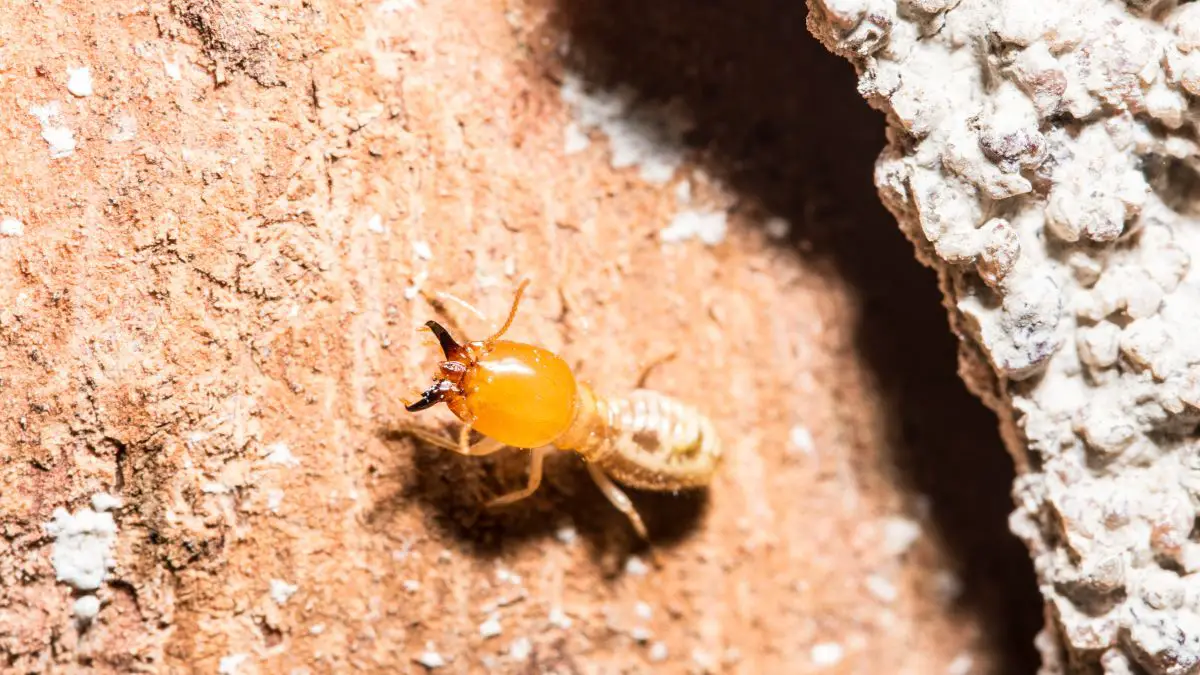If you own or consider using cedar wood for your home, you may have wondered whether termites pose a threat. We understand that protecting your property from these destructive pests is a top priority.
This comprehensive guide will explore the question, “Will termites eat cedar?”
Let’s dive into the fascinating world of these tiny yet harmful insects and understand how cedar wood fares against them.
Understanding Termites
Before delving into the topic at hand, it’s essential to understand the nature and behavior of termites.
Termites are social insects living in colonies known for their insatiable appetite for wood. They feed on cellulose, a complex organic compound found in plant materials such as wood and dead plant debris.
Termites play a vital role in breaking down dead trees and returning nutrients back to the soil.
The Cedar Advantage
Cedarwood has long been favored for its durability and natural beauty. But what sets cedar apart from other types of wood regarding termite resistance?
The secret lies in naturally occurring chemicals known as thujaplicins, which give the wood its distinct aroma and resistance to decay.
These compounds act as a deterrent to various insects, including termites.
Cedar’s Termite Defense Mechanism
Cedar contains natural oils that act as a powerful deterrent for termites. These oils have a strong scent that repels insects, making cedar wood an unattractive food source.
Additionally, cedar’s structure makes it difficult for termites to chew through.
The wood has a tight grain, reducing accessibility and hindering termites’ ability to burrow and establish colonies.
Types of Cedar Wood
Not all cedar wood is created equal in terms of termite resistance. When choosing cedar for your property, opting for the right variety is important.
Western Red Cedar, Eastern Red Cedar, and Alaskan Yellow Cedar are some of the most commonly used varieties known for their natural termite resistance.
These species possess higher concentrations of the natural oils that make cedar unappealing to termites.
Cedar Maintenance Tips
While cedar wood’s natural resistance to termites is a significant advantage, it’s essential to take preventive measures to maintain its durability.
Regular maintenance can further enhance the wood’s resistance and longevity. Applying sealants and stains that contain cedar extract can deter termites and protect the wood from other forms of decay.
Additional Termite Protection
While cedar is a fantastic choice for termite resistance, combining its natural properties with other preventive measures is always wise. Here are a few extra steps you can take:
Cedar is a popular choice for outdoor structures and furniture due to its natural beauty, durability, and resistance to decay.
However, while cedar possesses inherent insect-repelling properties, it is not entirely impervious to termites.
Follow these essential maintenance tips to ensure your cedar products remain termite-resistant:
- Regular Inspection: Frequent inspections are vital for detecting any signs of termite activity early on. Inspect your cedar structures, such as decks, fences, and pergolas, for small holes, mud tubes, or hollow-sounding wood. Identifying a termite infestation in its early stages can prevent significant damage.
- Keep Cedar Dry: Termites are attracted to moisture, making damp cedar an ideal target. Regularly inspect your cedar products for signs of moisture retention, such as discoloration or mold growth. Ensure proper drainage around the base of cedar structures and avoid direct contact with the ground to minimize the risk of termite infestation.
- Seal Cracks and Gaps: Termites can enter your cedar structures through even the tiniest cracks and gaps. Regularly inspect and seal any openings to keep these unwanted pests at bay. Use an appropriate wood filler or caulk to close gaps in the wood and prevent termites from gaining access.
- Apply Termite-Resistant Finishes: Consider using termite-resistant finishes, such as oils or sealants, to protect the surface of your cedar structures. These finishes act as a protective barrier against termites while enhancing the wood’s natural beauty. Regularly reapply the finish according to the manufacturer’s guidelines for long-lasting protection.
- Elevate Firewood and Lumber: If you store firewood or extra cedar lumber, keep it elevated and away from your home and other cedar structures. Storing wood on the ground or in close proximity to your property can attract termites, increasing the likelihood of infestations.
- Maintain a Clear Perimeter: Maintain a clear perimeter around your home and other cedar structures by removing wood debris, fallen trees, and old stumps. This minimizes potential hiding spots and food sources for termites, discouraging them from approaching your cedar products.
- Professional Termite Inspection: Consider scheduling professional termite inspections at regular intervals, especially if you live in an area prone to termite activity. A licensed pest control expert can identify potential risks and help you take preventive measures to safeguard your cedar structures.
Wrapping it Up
Cedarwood possesses remarkable natural properties that make it highly resistant to termites. Its unique composition, abundant natural oils, and distinct scent are deterrents that make cedar a less appealing food source for these pests.
Implementing these cedar maintenance tips for termite resistance protects your outdoor cedar structures and furniture from termite infestations.
Regular inspections, proper sealing, and vigilant upkeep will ensure that your cedar products maintain their charm and longevity while staying resilient against these destructive pests.
Remember, prevention is key to safeguarding your investment and enjoying your beautiful cedar additions for years to come.

